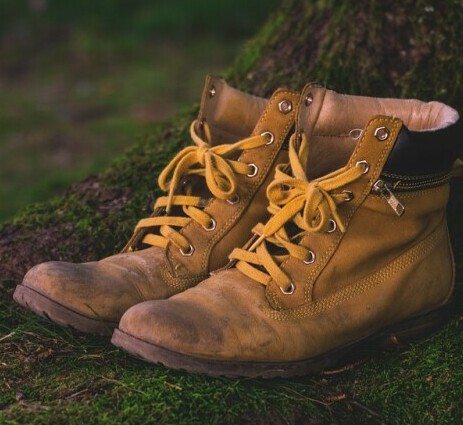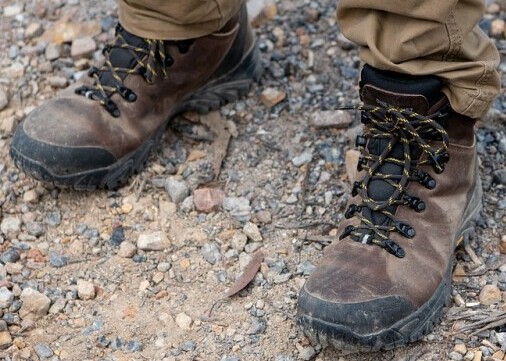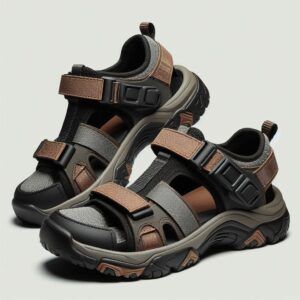Imagine you’re looking forward to a serene hike through forested trails or maybe you’re gearing up for an arduous trek up a mountain path. No matter the adventure, starting with the right footwear is crucial for a successful and enjoyable hike. This isn’t just about comfort; it’s about safety too.
Choosing the right hiking footwear isn’t a one-size-fits-all affair. Factors like the terrain you’ll be covering, the distance you’ll be hiking, and even the weather play a vital role. Also, your own foot structure and hiking experience must be taken into account. Pick poorly, and you could face blisters, strained ankles, or worse.
We’re going to delve deep into what makes for ideal hiking footwear. From full grain leather boots that laugh in the face of rugged terrains, to the breezy lightness of sport sandals for those casual shore-hugging trails, I’m here to help you make an informed decision.
By the end of this guide, you’re going to find out about the best footwear for your hike, with the aim to give you confidence and comfort on your trek, whether you’re a Sunday stroller or a dedicated mountaineer. So, let’s lace up and take the first step into the world of hiking footwear.
Starting with the old faithful, let’s talk full grain leather boots. These staples have shod the feet of outdoor enthusiasts for decades and for good reason. They’re the epitome of durability and offer unparalleled protection. Their story begins deep within the forest trails, where they continue to make their mark.
The Traditional Choice: Full Grain Leather Boots

Full grain leather boots stand as a testimony to traditional hiking gear, favoured for their undisputed durability and classic aesthetic. Let me break down why these boots might just be the stalwart companions you’re looking for on your next adventure.
Starting with what sets them apart, full grain leather contains the toughest part of the hide, which means it offers superior resistance to wear and tear. If you’re venturing into rugged or rocky terrain, these boots are built to offer significant protection from abrasive elements.
Their natural material provides excellent breathability while still maintaining a water-resistant barrier when treated correctly. This combination spells comfort for long distances, keeping your feet dry from external moisture and minimizing the risk of blisters over time.
Of course, full grain leather boots aren’t typically ready to go straight out of the box. Breaking them in is an essential step that ensures the material molds to your feet, something you’ll want to invest time in before hitting the trail.
So how do you keep them in top shape? Regular cleaning, conditioning, and treating it with durable water repellent (DWR) coating can extend their lifespan considerably. A well-maintained pair of leather boots can accompany you on countless hikes, making them a worthy investment for serious hikers.
And it’s not just about functionality. Style-wise, full grain leather boots have a timeless look that has been embraced by hikers for generations. They can make you feel like a part of the grand tradition of wilderness exploration the moment you lace them up.
I’ve also come across many hikers who share stories of their ventures with full grain leather boots leading the charge. Such testimonials often highlight the unyielding nature of the boots on challenging trails, providing both confidence and reliability.
Moving on, you’re probably curious about how different materials stack up against the tried and true full grain leather. Well, that’s going to include taking a look at synthetic and leather combination boots, which I’m going to talk about next. This isn’t just about weighing classic against modern—it’s also about pinpointing the right choice for each individual hiker’s needs.
The Modern Twist: Synthetic and Leather Combination Boots

Now, I’m going to shed some light on the synthetic and leather combination boots, which are quite the trendsetters in the hiking community. These boots bring a breath of fresh air to traditional hiking footwear by combining the durability of leather with the lightweight and quicker drying attributes of synthetics. Let me walk you through the ins and outs of these hybrids.
You’re going to find out about the significant advantages that synthetic/leather boots hold over their all-leather counterparts. For starters, they generally offer better breathability and faster drying times – a real benefit if you’re tramping through wet conditions. Plus, they’re often lighter, which can be a game-changer on long treks.
I’m here to help you understand the differences between these hybrid materials and the pure forms. Synthetic/leather boots have a reputation for requiring less break-in time, which means more comfort right out of the box. That, coupled with improved moisture management, can mean fewer blisters and happier feet on the trail.
Choose something that resonates with you in terms of your hiking preferences. If flexibility and reduced weight appeal to you, then synthetic/leather boots might be your jam. But bear in mind that they might not be as long-lasting as full grain leather, depending on how you use and care for them.
In my opinion, the key to enjoying your hikes with synthetic/leather boots is to pick the right fit and style. Some come with water-resistant membranes, some prioritize breathability, and others focus on providing optimal support.
So, what happens when you move from discussing boots to something a bit lighter on the feet? That’s going to include examining hiking shoes and trail runners, which may offer just the right balance of protection, durability, and speed for your next adventure. But before we stride into that, remember that whether you choose synthetic/leather combination boots or another type, your feet will be the ones to carry you through all your journeys.
Exploring Lighter Alternatives: Hiking Shoes and Trail Runners

Let’s take a route that’s increasingly popular among hikers: switching over to lighter footwear. I’m talking about hiking shoes and trail runners, two categories that offer a breath of fresh air for your feet, without sacrificing too much on protection and support.
First up, hiking shoes. These are essentially the low-cut, more flexible cousins of the traditional hiking boot. They’re perfect for day hikes or short backpacking trips where the burden on your back is minimal. With a design that focuses on comfort and convenience, you’re going to find out about their enhanced breathability – a welcome feature on hot days and moderate trails.
On the flip side, trail runners are all about speed and agility. They have grippy soles just like their sturdier counterparts, but are designed for those who want to cover ground quickly. Their lightweight nature doesn’t mean they’re weak; in fact, you can bank on these for impressive performance on well-maintained trails.
Comparing these two lighter options, there’s a clear trade-off between weight and durability. Hiking shoes often offer better toe protection and sturdier soles, making them ideal for rougher terrain. Trail runners, though, might just edge them out in terms of cushioning and response, which is great if you’re aiming to keep a brisk pace.
Now, I’ve heard from many hikers who’ve had joyful excursions in both. They claim the freedom of movement and a closer connection to the trail makes for a more enjoyable hike. There’s definitely a time and place for lighter footgear, and understanding your needs is key to making that choice.
When Less is More: Embracing arduous Sandals for Hiking

I’m going to wrap things up by tipping the hat to the unsung heroes of the hiking world: sport sandals. You might be scratching your head, thinking, ‘sport sandals for hiking, really?’ But hear me out. With the right conditions and a trail that accommodates them, sport sandals can be the ultimate breath of fresh air for your feet.
Choose something that resonates with you, and if that’s sport sandals, then guess what? They are a legitimate option. They offer a liberating experience with their open design, allowing water to pass through easily and your feet to breathe freely — which means no more swampy feeling after crossing a stream.
That said, they’re not a one-size-fits-all solution. Sport sandals excel in warm, dry climates on well-established trails. It’s crucial to understand their limitations; rough, uneven terrain or colder weather can call for more protective and supportive footwear.
Don’t worry too much about the skeptics. Many seasoned hikers have incorporated sport sandals into their treks successfully, often complementing their hike rather than compromising it. So my question to you today is, could sport sandals be the right choice for your next hike?
At the heart of it all is the pursuit of enjoyment and comfort on your hiking adventures. Whether you go for the durability of full grain leather boots, the adaptability of synthetic/leather hybrids, the support of mid or high cut boots, the lightness of hiking shoes and trail runners, or the refreshing simplicity of sport sandals, the right choice depends on where your feet will take you.
And remember, your first attempt at choosing hiking footwear doesn’t need to be your last. Over time, you can always adjust your approach down the road as you gain experience and understand your preferences better. So lace up, strap in, or slip on the right pair, and set out to make the most of your journey on the trails. Keep it practical, prioritize your safety, and above all, enjoy every step of the way.
